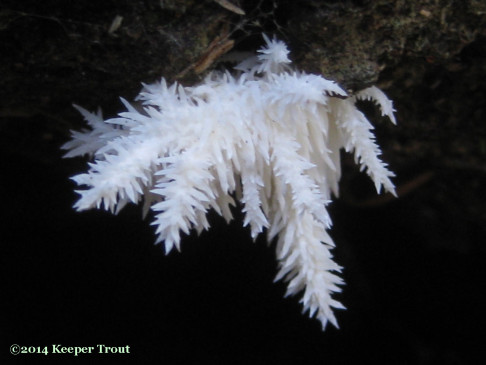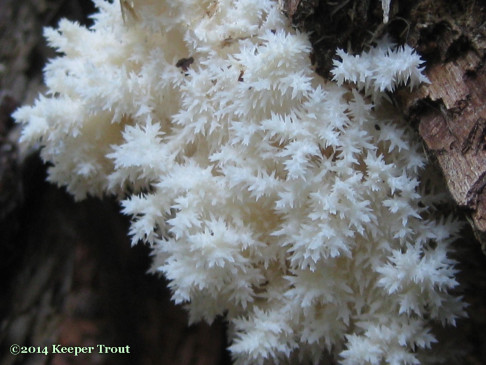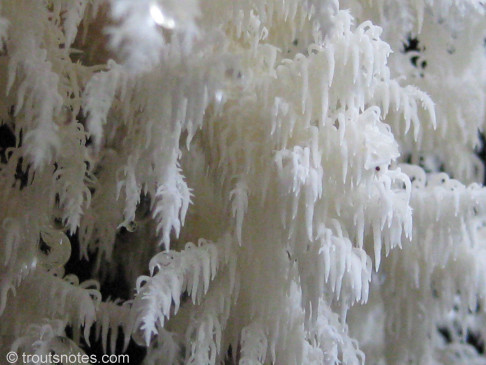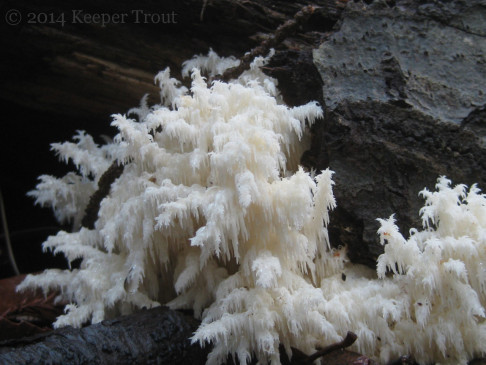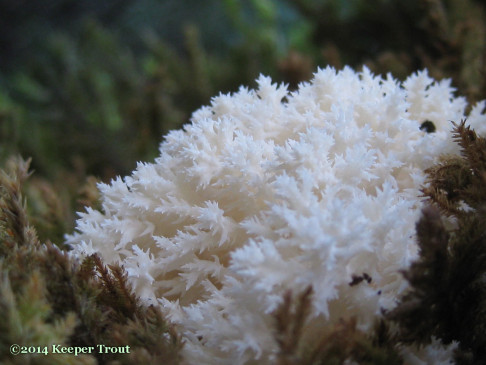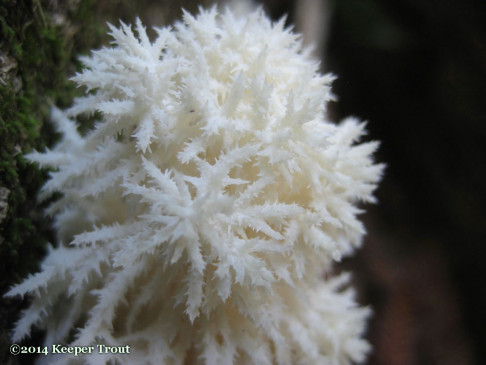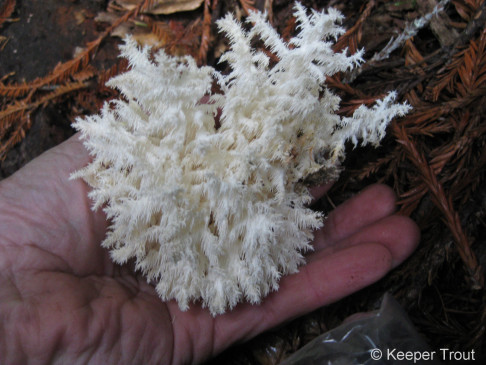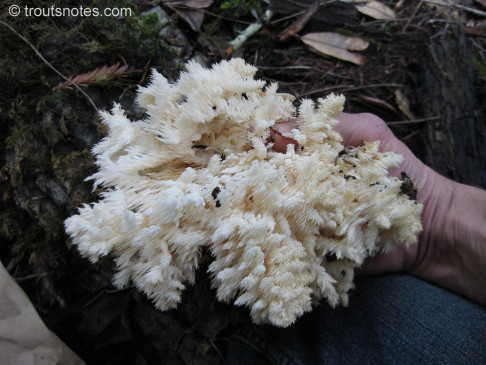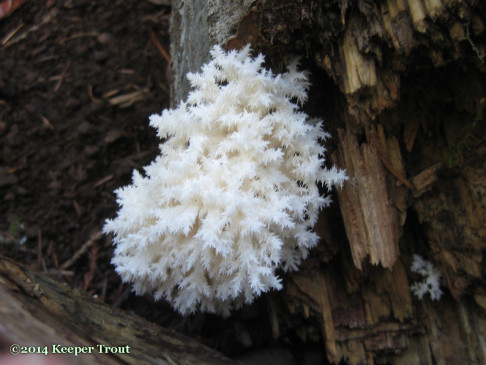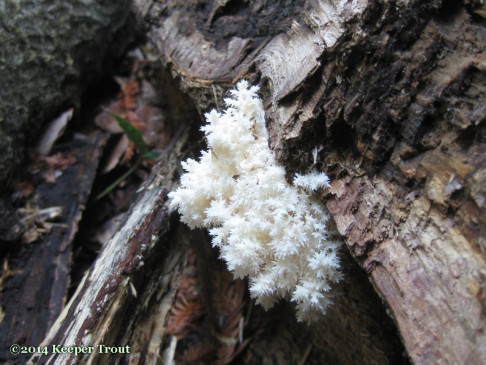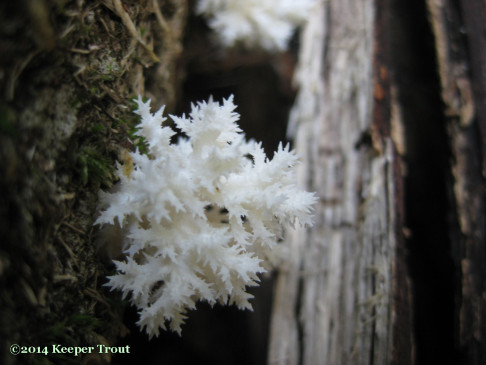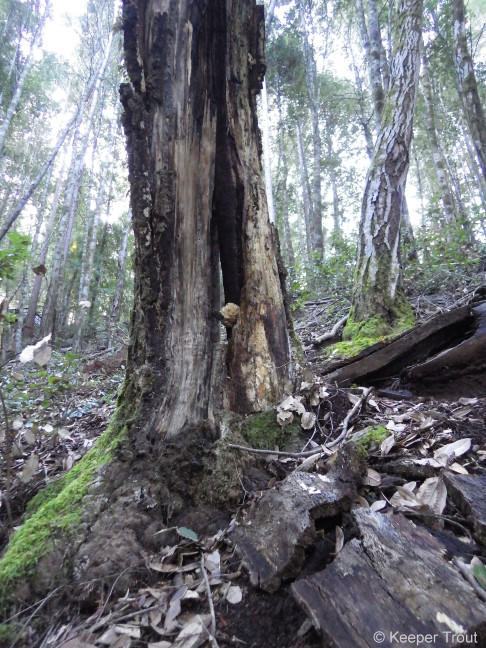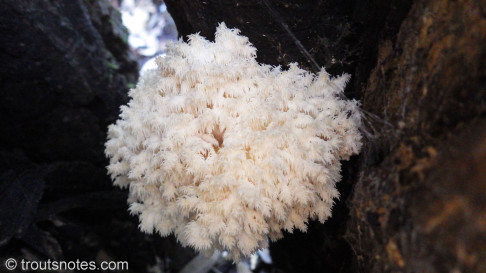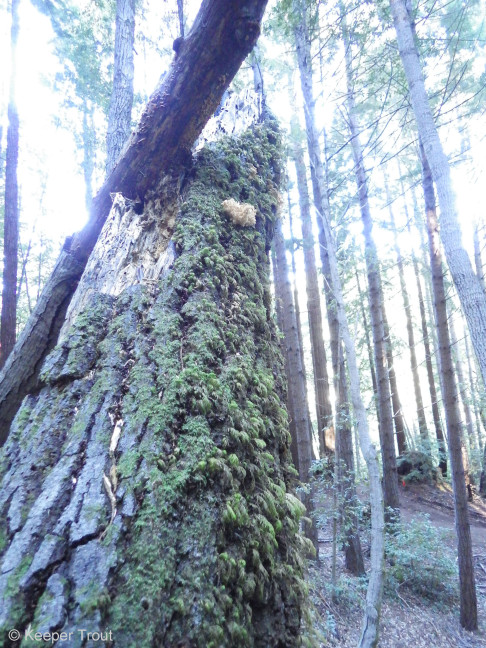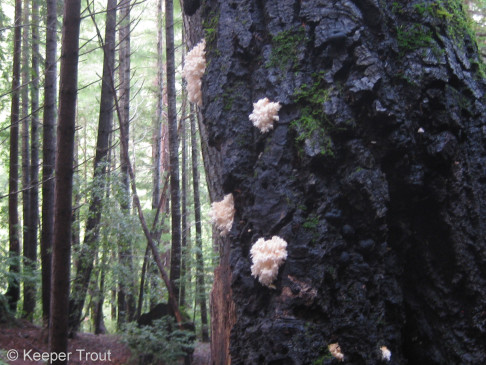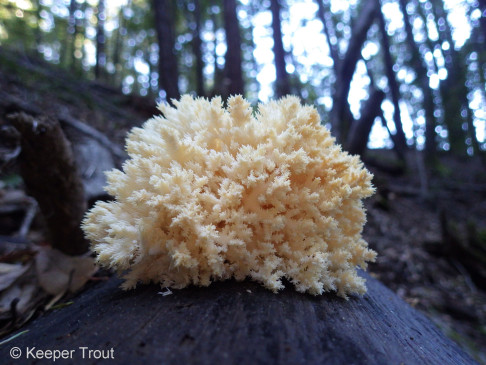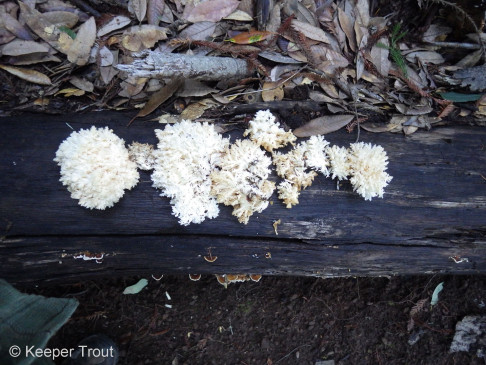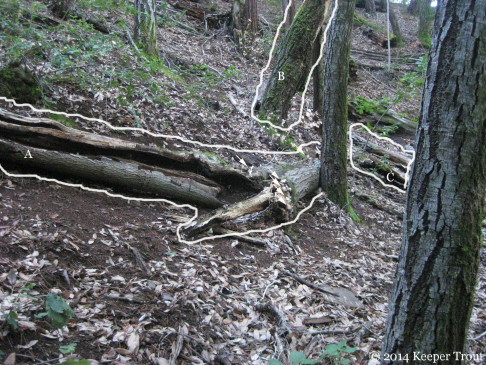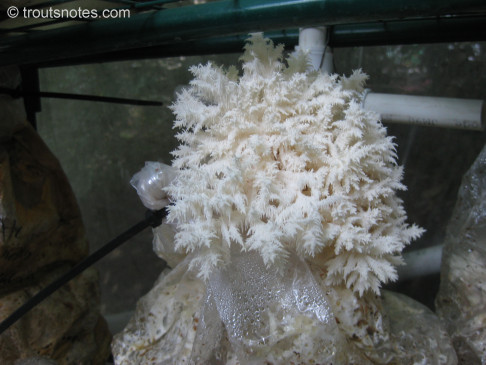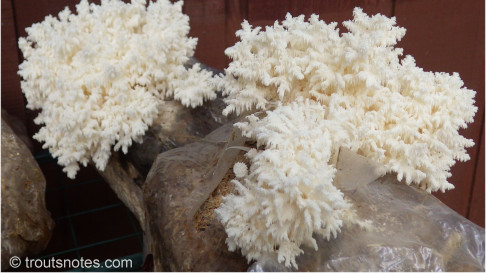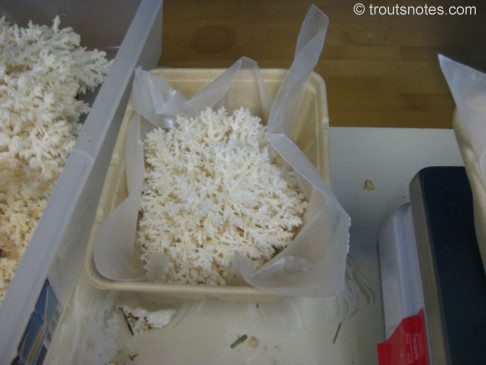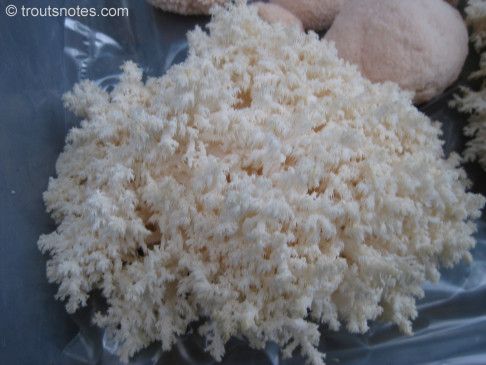Hericium coralloides are a lot of fun to hunt, have a great taste, a wonderful texture, smell nice, they feel nice, are incredibly beautiful and seem to be able to produce fruiting bodies until they run out of food to eat. Here in Mendocino County, I’ve collected fruiting bodies during every month from September through June if the weather was cool, mild, foggy and with not too much rain.
Many people think these are rare but this idea arises as the result of at least half a dozen factors. There are two very noteworthy reasons: these fruit best when most other mushroom species are not (they peak in-between the rainy periods and will almost seem to melt if they get rained on very hard) and people are very aggressive about cutting down and removing trees inhabitated by Hericium species. If it occurs anywhere near humans a Hericium tree is frequently removed as firewood or chipped before its first fruiting of coralloides can occur. The easiest and most productive way to find coralloides is not to look for the mushrooms but rather to look for the trees. Finding the trees can be done any time of year and both the tree and the downed parts should then be checked during cool weather. Once you have found the trees you can find the mushrooms, with patience.
Most people are pleasantly surprised to discover just how widespread these actually are in distribution. They might occur in every temperate and forested country on the planet but I have not done an exhaustive evaluation of this subject yet. Aurora notes them to sometimes be locally abundant but my suspicion is that they may only not be locally abundant due to the destruction of their habitat (dead, downed and rotting trees and branches). Or at least, any time that I can find somewhere that lacks removal of those trees local abundance has bee the norm. Maybe I’ve just been lucky?
The first sign to look for is an invagination at or near the base of the tree. Sometimes it will run up a substantial length of the tree or else be present as a large wound elsewhere on the tree. I don’t know if these are caused by the Hericium or if is how they enter but so far they have been invariably present (at least in my experience). (A pictorial on the life of a Hericium tree is in the works and will be posted here as soon as it is completed.)
The easiest tell-tale sign of a tree to watch is the loss of a large section or the upper part of the tree. Generally in 1-2, sometimes 4, years after that has happened coralloides will begin fruiting on the downed section and, if you are lucky, on the main tree. It will do best if the downed section is partially in the air. The organism creates hollow pockets in the main trunk. It can get quite large yet never been seen due to occupying the inside of the tree. Ropy mycelial extensions grow into the tree to feed and sometimes to find a way to the outside to form fruit. A tree can sometimes be taken apart to extract those ropy masses but doing so will end fruiting that year and may actually kill or substantially weaken the Hericium . Being careful not to harm the organism that is located inside of the tree will permit it to live and fruit for many years. The tree below has been the source of regular harvests for the past 9 years. *Easily* 35 pounds of fruit has been collected from this once huge tan-oak carcass. If history can be used to predict, this one is within its last 2-3 of years of productive life.
Here is a look at that same tree from a different point of view. It is B in this image. C is part of it that fell a while back. A is an unrelated Hericium tree that broke into sections. Fruiting can potentially occur almost anywhere on the trees enclosed by white lines. Small fruit and lines of fruit in formation are noted with white arrows.
Erinaceus and coralloides commonly occur on the same trees here. Usually on tan-oaks, sometimes on actual oaks. Hericium erinaceus most often fruits while the tree is still alive and only occasionally fruits on dead sections. Hericium coralloides fruits entirely on dead wood. The point where the tree top topples is typically the same zone where the erinaceus had been fruiting in previous years. At least this has been true here in Mendocino County within the narrow window of my observations.
I’m not a mushroom expert but I’ve been avidly hunting this particular species for 11 years. And have been learning to cultivate it for the last four years.

